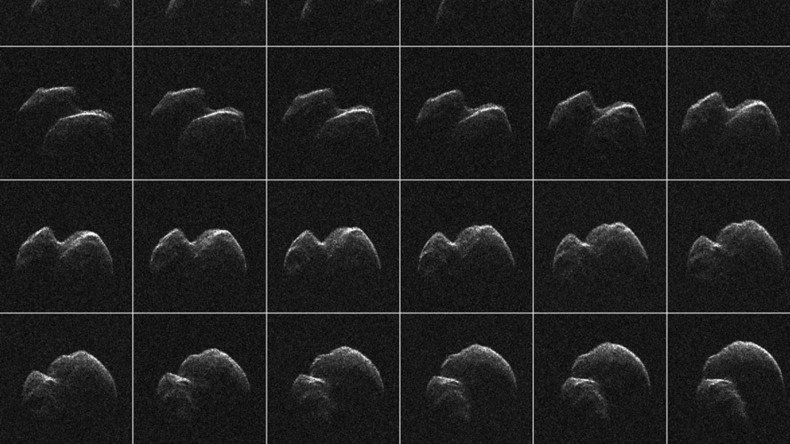NASA gets close look at ‘rubber duck’ asteroid as it passes Earth

Scientists enjoyed a close look at a rubber duck-shaped asteroid as it passed within 1.1 million miles of the Earth on April 19.
Data collected during the flyby of the not-so-catchily named 2014 JO25 were revealed by NASA Friday. The close approach allowed NASA to examine details of the rock that would have otherwise required a space probe.
The asteroid’s very unique shape – two components connected by a neck – is said to resemble a lopsided peanut or rubber duck.
Initial Results from the Close Approach of Asteroid 2014 JO25 - https://t.co/EgvVXabDY2 - Via @NASAJPL -Duck-shaped space rocks are a thing. pic.twitter.com/Jfx9L133fe
— Dave Dickinson (@Astroguyz) May 7, 2017
With an estimated size of 2,000ft (650 meters), the equivalent of six football fields, the spinning rock was the closest approach of an asteroid of similar size since 4179 Toutatis passed in 2014.
The National Science Foundation’s Arecibo Observatory in Puerto Rico and NASA’s Goldstone Solar System Radar in California captured radar observations of the asteroid as well as hundreds of high-resolution images.
Pics of 2014 JO25 - source @NASAJPLhttps://t.co/jMbTlJ5ZNX
— Colm McGlinchey (@ColmMcGlinchey) May 7, 2017
How exactly it got its shape is unclear, with NASA suggesting it may be the result of a slow collision between two separate objects, or potentially the result of approaching a planet like Earth or Mercury at such a close distance that planetary tides pulled it apart.
The asteroid was also found to have a high rotation period, rapid enough to cause it to slowly separate into two objects.
Asteroid is hurtling towards Earth for closest flyby in 400yrs (IMAGES, VIDEO) https://t.co/9xoxKZ0Caepic.twitter.com/OXJh2Gyw1r
— RT (@RT_com) April 20, 2017
Hopefully NASA collected enough data to keep them busy for some time. They’ll have to wait another 400 years for the asteroid to come by again.












